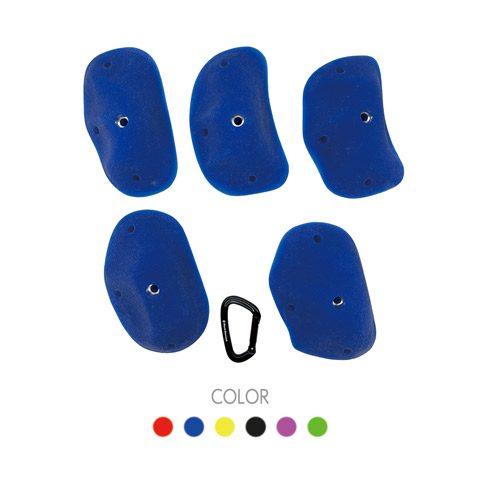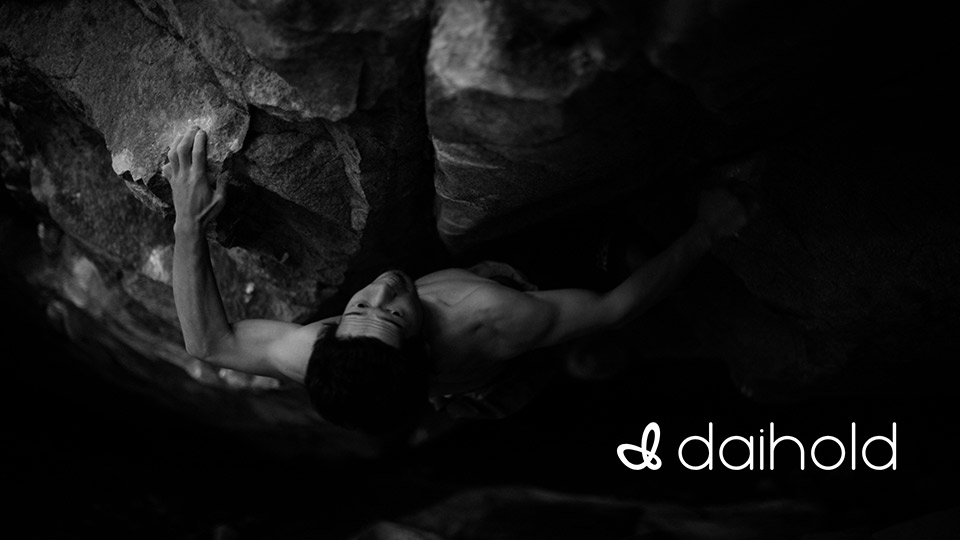


Has scratch-like fine grooves on the surface of holds as its name, and you can enjoy that touch-feeling besides the texture of the form.
Also, these grooves affect gripping. These series of holds can be used on steep walls, since grooves make gripping better than only holds’ shape.
These holds are easy for the fingers due to their rounded-shape without edges.
shaper Dai Koyamada
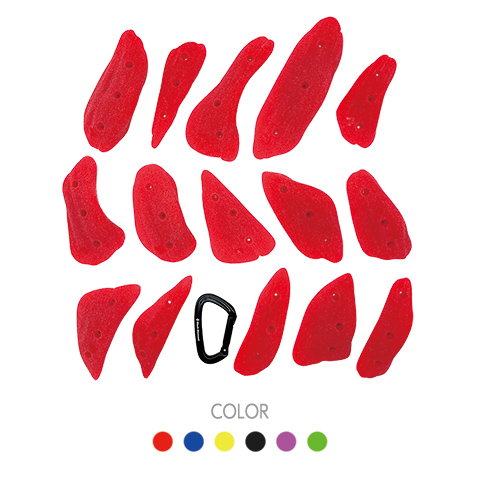
contact
High and deep pocket holds with rounded edge where fingers touch. Hard to get injured on fingers even with one-arm hanging. Since the outside part also has friction, they can be used as foot holds as well.
Adaptive angle: Slab-145°
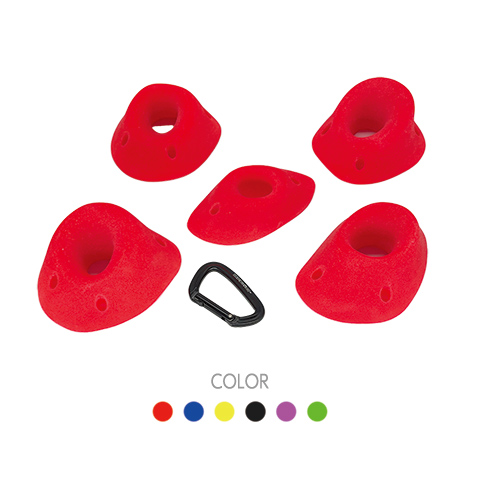
Simple and thick half-moon shaped edge holds. They can be used for routes requiring body-core strength on the overhang wall. Even when placed upside down as under holds, they can be used as foot and pinch holds. S-M small size holds.
Adaptive angle: Slab-145°
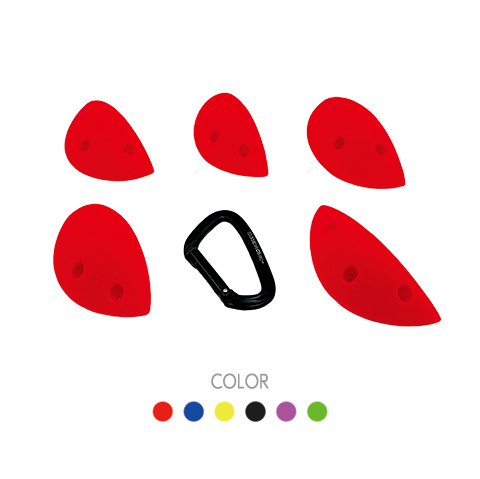
Simple and thick half-moon shaped edge holds. They can be used for routes requiring body-core strength on the overhang wall. Even when placed upside down as under holds, they can be used as foot and pinch holds. M-L big size holds.
Adaptive angle: Slab-145°
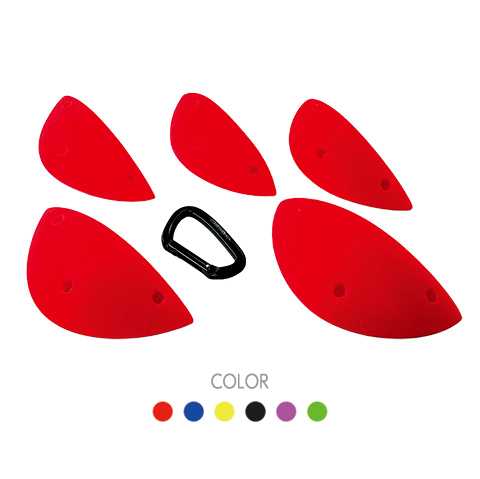
Simple pinch holds set. Since all surfaces have friction, they can be used as foot holds even when put on vertically. Good for spray walls and pinch training. M-L wide size holds.
Adaptive angle: Slab-140°
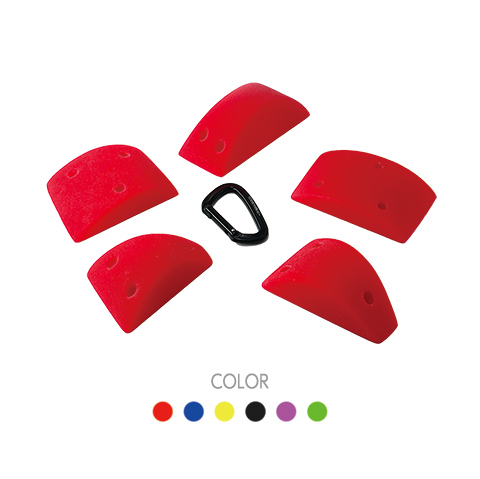
Simple pinch holds set. Since all surfaces have friction, they can be used as foot holds even when put on vertically. Good for spray walls and pinch training. S-M narrow size holds.
Adaptive angle: Slab-140°
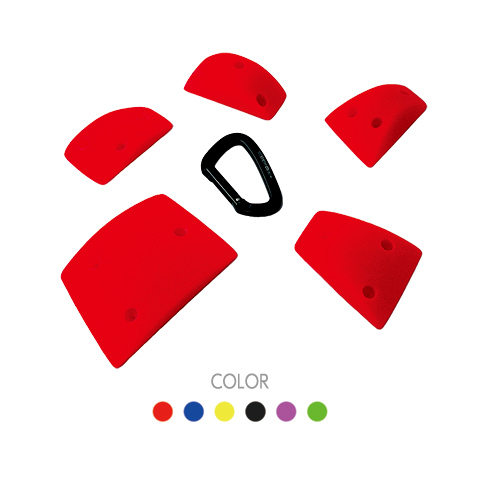
The dual-texture version of kisima. Since these holds don’t have friction, they cannot be used as neither foot nor hand holds except for the holding surface in the middle, and are good for limiting moves.
Adaptive angle: Slab-145°
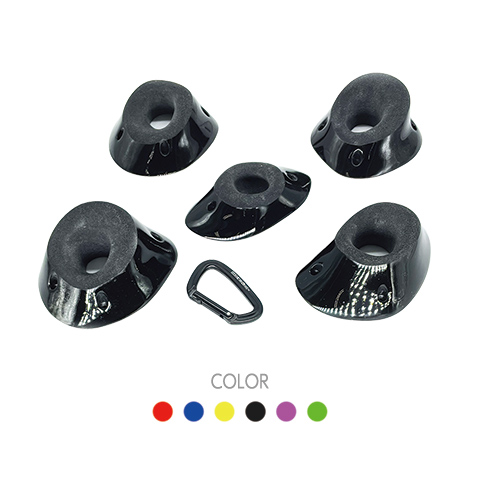
The dual-texture version of mwezi-A. Removes friction from surfaces except for the holding surface. They cannot be used as neither foot nor hand holds. S-M small size holds.
Adaptive angle: Slab-145°
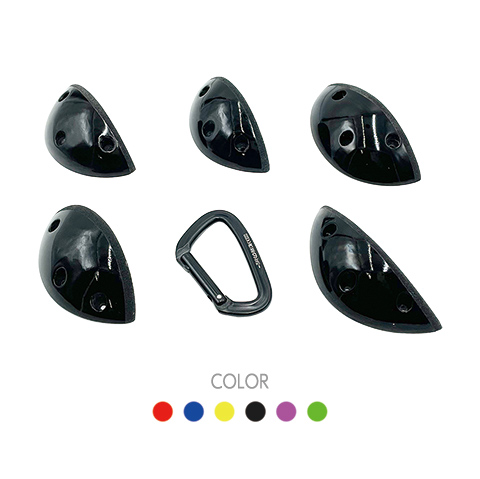
The dual-texture version of mwezi-B. Removes friction from surfaces except for the holding surface. They cannot be used as neither foot nor hand hold. M-L big size holds.
Adaptive angle: Slab-145°
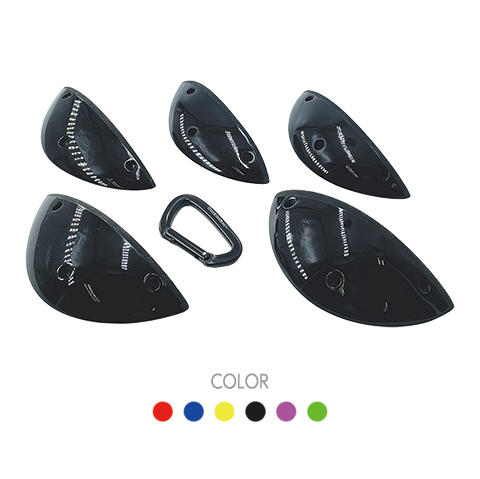
The dual-texture version of dakiza-A. This design removes friction from surfaces except for holding surfaces which limits the use of thumbs and feet, which makes it easy to limit moves as well. M-L wide size holds.
Adaptive angle: Slab-140°
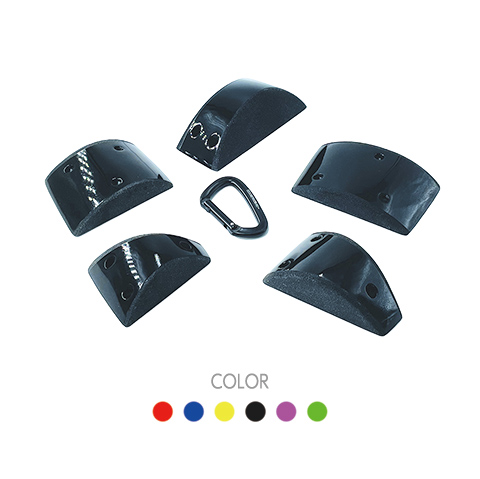
The dual-texture version of dakiza-B. This design removes friction from surfaces except for holding surfaces which limits the use of thumbs and feet, which makes it easy to limit moves as well. S-M narrow size holds.
Adaptive angle: Slab-140°
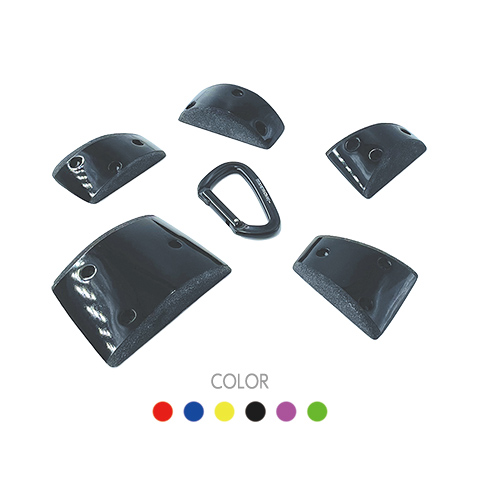
Satisfying-feeling shallow jug holds set. Since these holds are very incut, they can be used on roof walls.
Adaptive angle: Slab-Roof
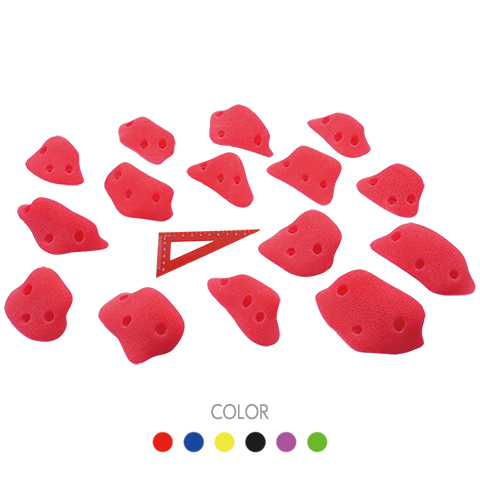
Micro-crimp holds sets with granite-like shape. Can be used on the slab or the vertical wall as hand holds as well as foot holds on the overhang wall.
Adaptive angle: Slab-Overhang
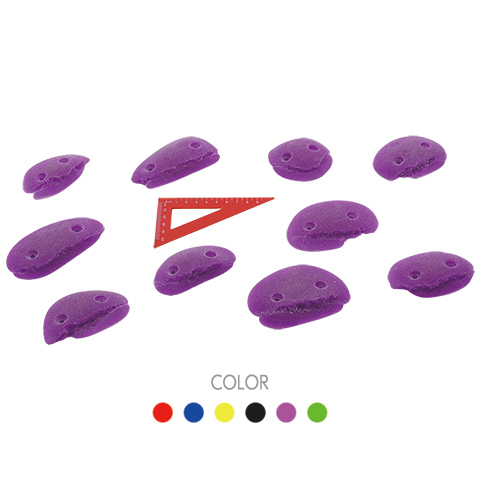
Simple design shallow jug holds set. Since this hold is compact, it is easy to fill the gap among holds on the wall.
Adaptive angle: Slab-180°
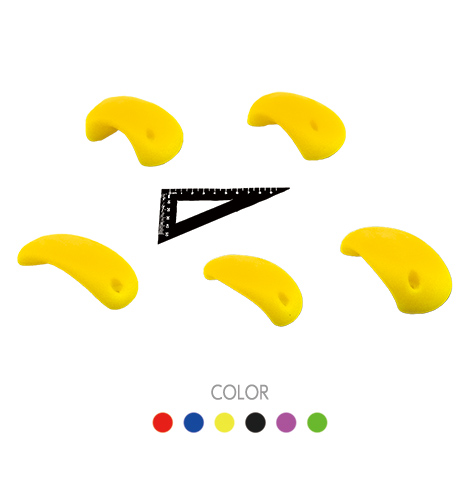
Pocket holds set designed to prevent finger injuries.
Adaptive angle: Slab-140°
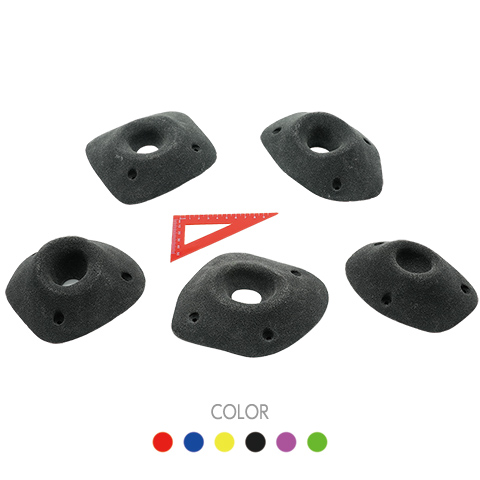
The dual-texture version of kilima. The rim is unholdable and cannot be stepped on.
Adaptive angle: Slab-140°
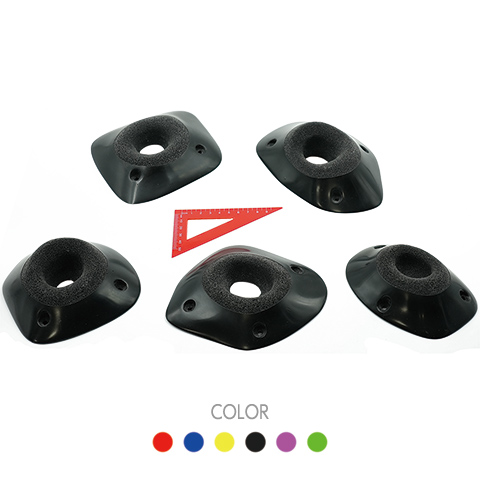
Incut and wide edge holds set. Since the hold has a wide holding surface, holding with two hands is possible. Additionally, all surfaces except for the holding surface are hard to step on, therefore, they can limit moves.
Adaptive angle: Slab-160°
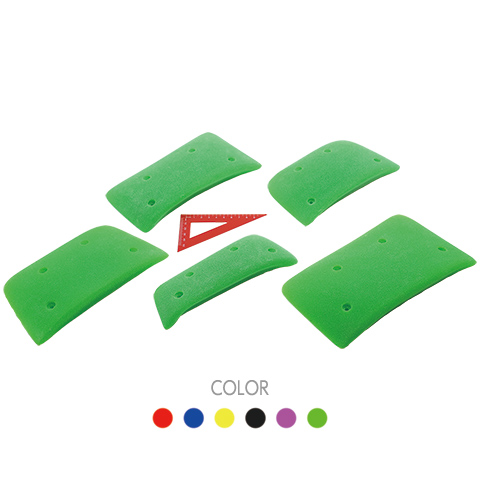
The dual-texture version of bodi. Specialized in limiting moves because of its unholdable surfaces.
Adaptive angle: Slab-160°
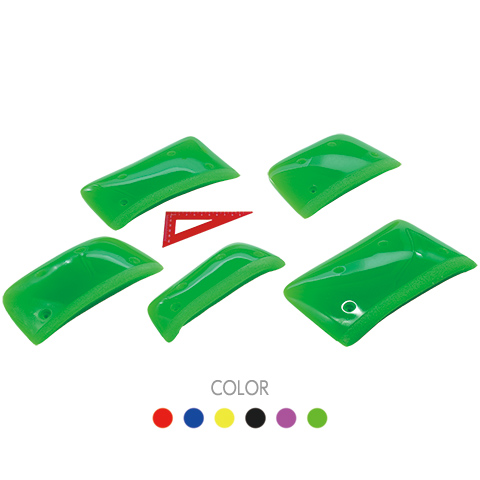
Micro-crimp holds set with sandstone-like shape. They are useful for the micro hand hold on semi-vertical walls and the foot hold on overhang walls.
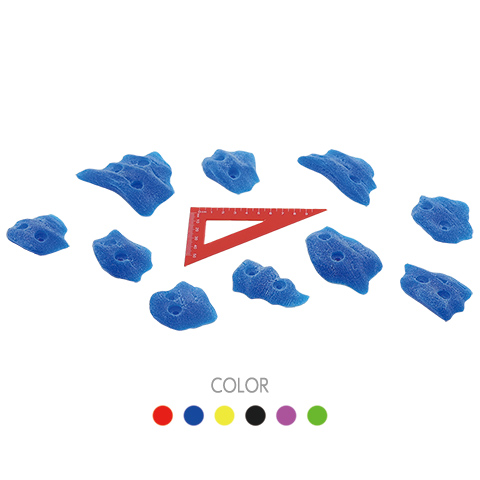
Micro foot holds set with granite-like shape on stepping surface. They can be used as hand holds on the slab wall as well.
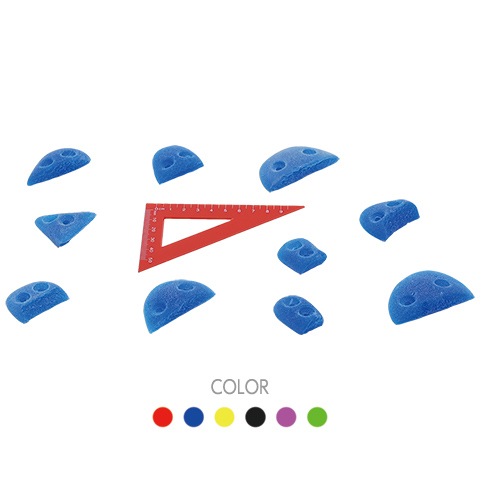
Pure crimp holds that limit the use of thumbs. Holding surfaces are controllable, overlapping each hold. Designed for walls up to 145°.
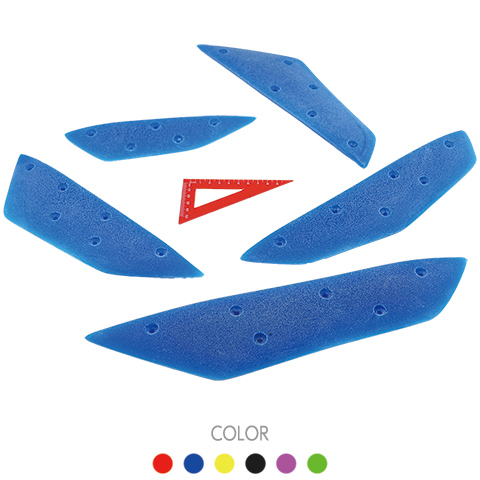
Pure crimp holds that limit the use of thumbs. Holding surfaces are controllable, overlapping each hold. Designed for walls up to 145°.
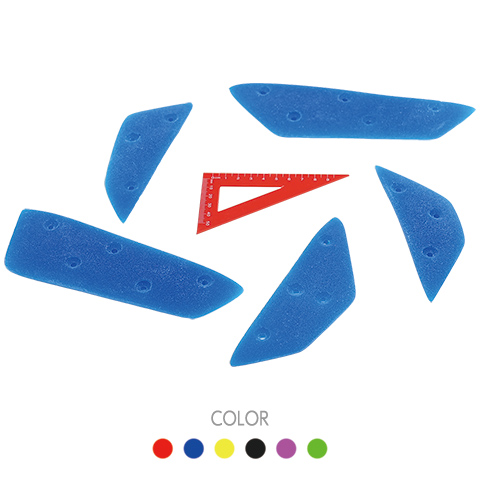
Deep incut holds with round and straight edges. Designed for walls up to 180°.
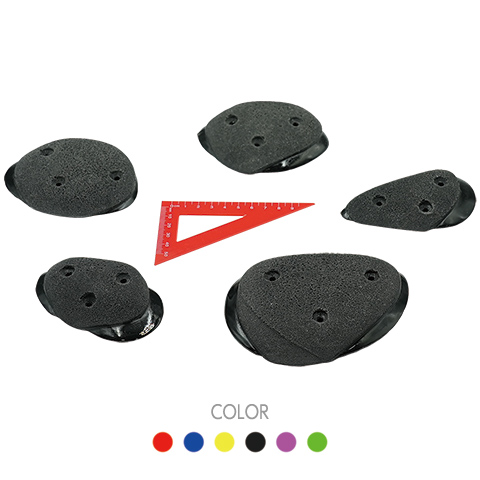
Unique and organic design holds. Rounded edges are easy on fingers, and good for long hours of training. Designed for walls up to 140°.
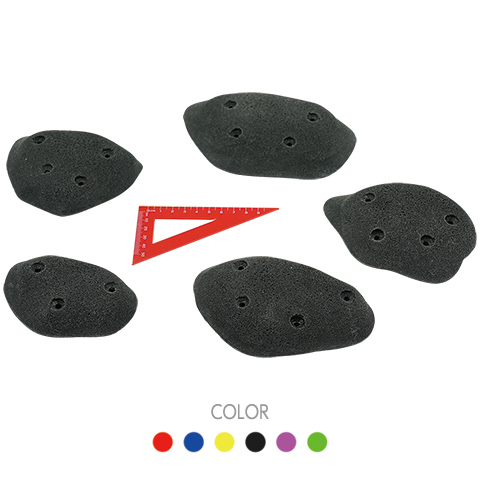
Replicating the rough texture of granite, these holds are ideal for training fingers for real rocks. Designed for walls up to 130°.
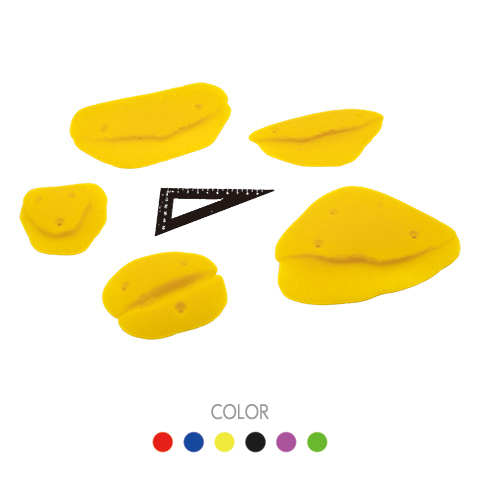
Unique holds with dual texture. Positions of thumbs in slots are key for holding. Designed for walls up to 145°.
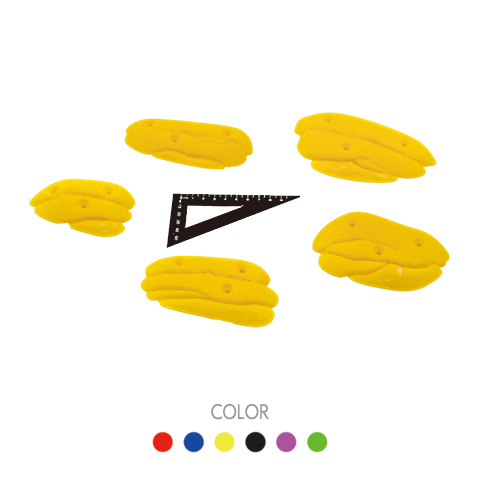
Designed to imitate weathered sandstone, this rough-texture model is also ideal for training for outdoor climbing. Designed for walls up to 130°.
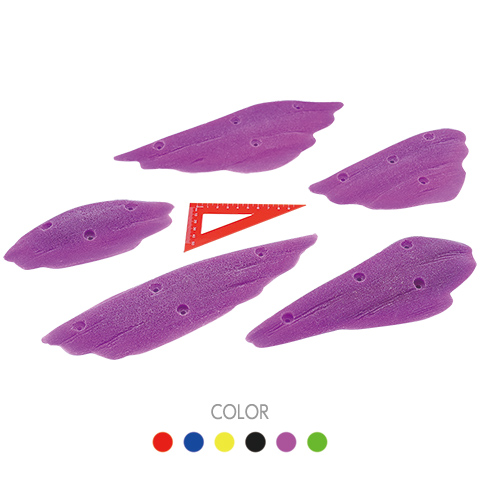
Designed to imitate weathered sandstone, this rough-texture model is also ideal for training for outdoor climbing. Designed for walls up to 130°.
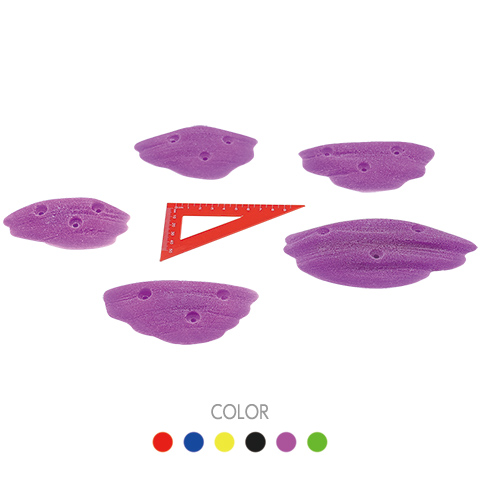
Simple incut holds which limit thumb use. The ideal model for intense gripping on overhang walls. Designed for walls up to 150°.
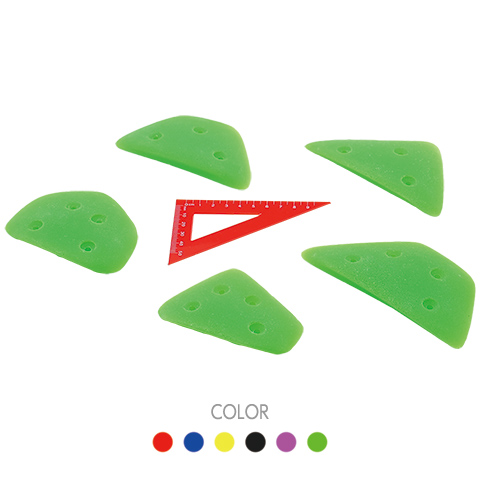
Simple incut holds which limit thumb use. The ideal model for intense gripping on overhang walls. Designed for walls up to 150°.
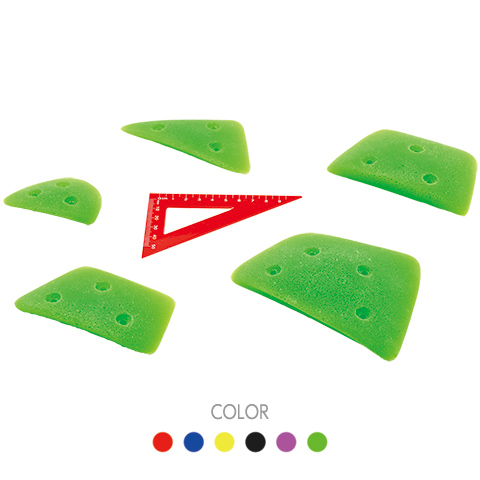
Perfect for using on aretes and volumes. Can also be used as foot chips.
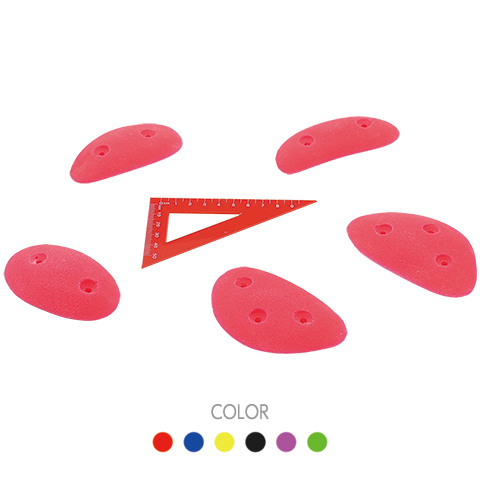
Incut edges held by working the fingertips in. The edges are rounded to help prevent finger pain. Designed for walls up to 145°.
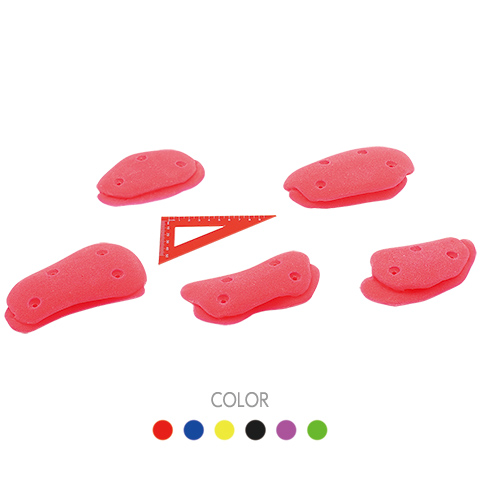
contact
Long-awaited volumes from Daihold!
The first volume, Iceberg, is fully textured model which is easy to use on spray and competition walls.
Holding surfaces are not simple plane and have a different grip-feeling; it is a never-boring design.
This series of holds can realize the outdoor-like-climbing style, looking with better gripping position on holds.
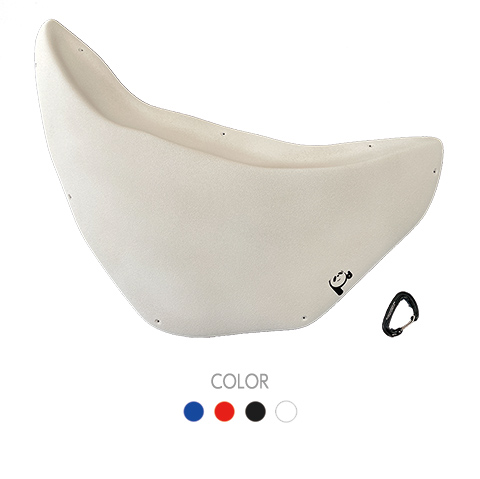
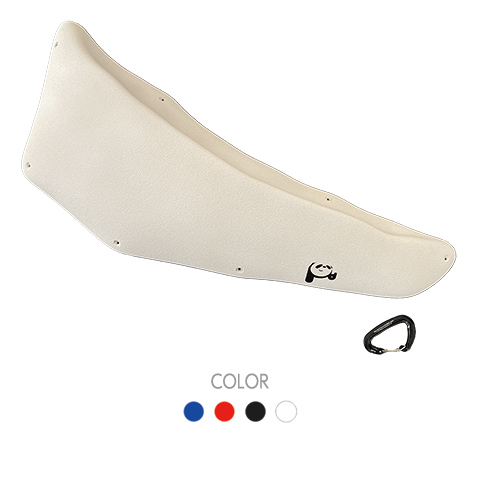
We are happy to announce “Project Plate”, a new wooden finger plate.
This finger plate is purely made in Japan and made from wood from Hinokage town, Miyazaki prefecture, which is the one of the best bouldering areas in Japan.
Oak is used for the 4mm and zelkova is used for 6, 8 and 10mm after drying 5-10 years. These materials are very rare and valuable, usually used for shrines, temples, luxurious furniture, traditional craftworks and so on.
Finger plates are the most important training gear for rock climbers to train their fingers.
The “Project Plate” which is made from good quality wood, oak and zelkova, is not only durable, but also has good texture. The more you use it, the more the plate fits to your fingers.
Please add this finger plate to your training gear collection.
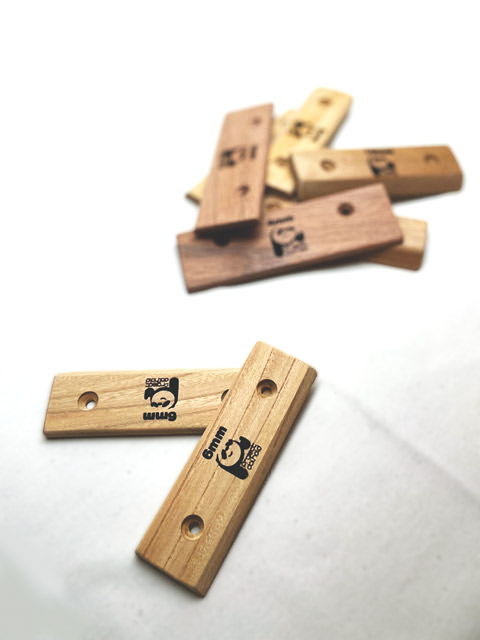
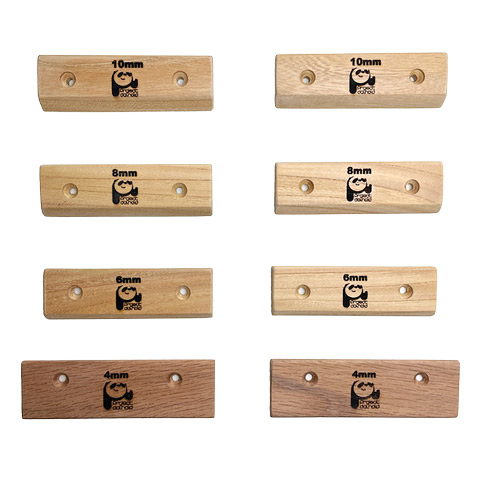
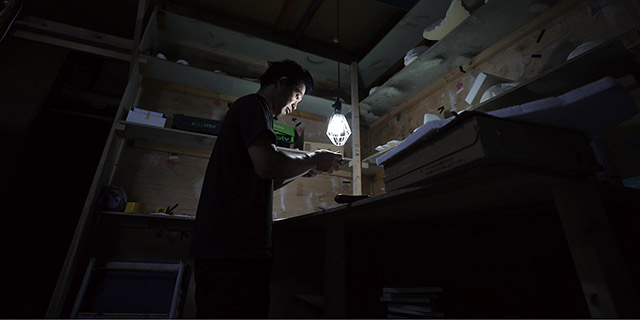
What’s the most important ability in climbing?
I would say that it’s finger strength.
The power of your muscles and body is wasted unless you can transfer that power through your fingers to the wall.
While the popularity of artificial climbing walls is surging and huge holds are becoming the norm, I ventured to design holds to seriously train finger strength to refocus on outdoor climbing.
Dai Koyamada
Born on August 23rd, 1976. From Kagoshima prefecture.
Director of Daihold Co. Ltd., and the president of Project climbing gym.
He started rock climbing by himself when he was 15-year-old. He's created 10K+ bouldering routes as a first-ascender all over Japan. More than 90% of difficult routes in Japan have been created by him as of now.
Main accomplishments
Nayuta V16 FA
Mugen V15 FA
Horizon V15 FA
Okrou V15 FA
Arobayo V15 FA
Amaterasu V14/15 FA
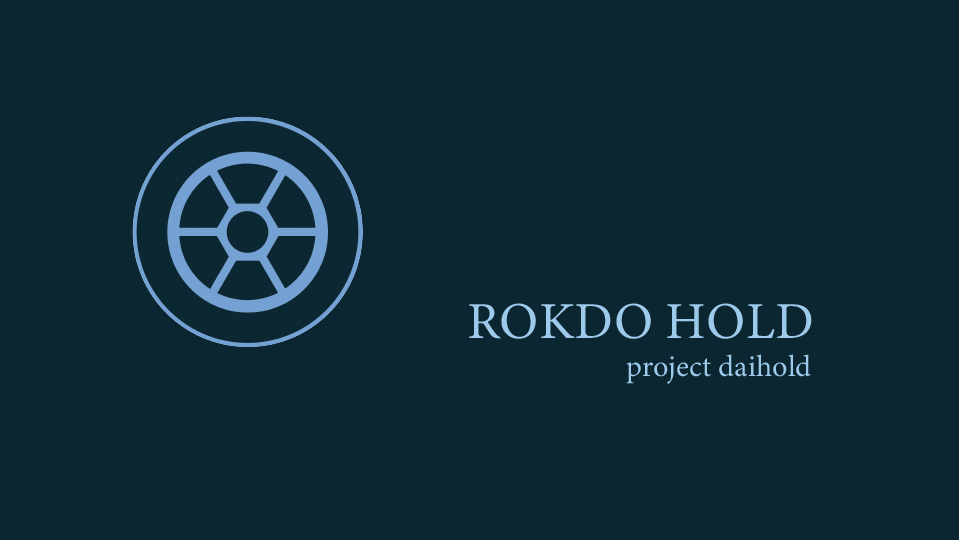
We are a ROCK CLIMBING team organized by members facing to a rock, being based on the belief to further extend and pass on the fascinating culture “Rock climbing” into the future.
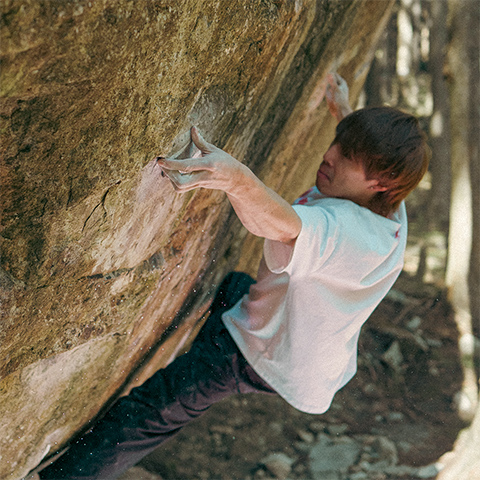
Born in 1996. From Chiba prefecture.
He started rock climbing when he was in fourth grade, and used to compete professionally.
Currently, he has shifted his field to outdoor climbing since 2020, establishing team ROKDO.
Main accomplishments
Hydrangea V15/16
Mona lisa V15
Paradigm V14
Emotion V14
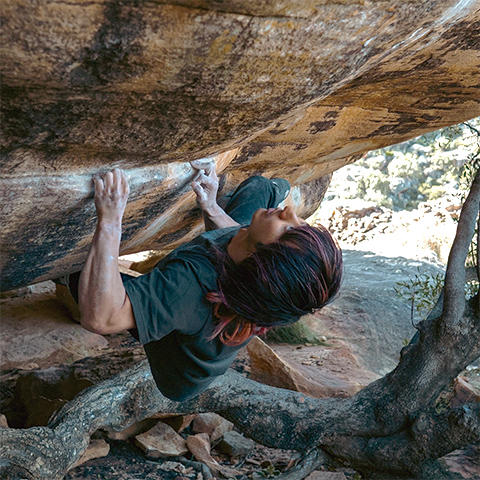
Born on January 17th, 1997. From Ibaraki prefecture.
He has been active mainly at outdoor bouldering since 2017. He has achieved the top of the world outdoor bouldering ranking. Even after that, he's made many the shortest-sending period records. He is also popular as a regular and competition route setter for climbing gyms in Japan. He used to compete internationally in Asia including in world cups and world youth competitions, and was awarded many times.
Main accomplishments
Gakido V16 FA
Loca V15 FA
Spray of light V15
Byakudo V15
Rokudo V15
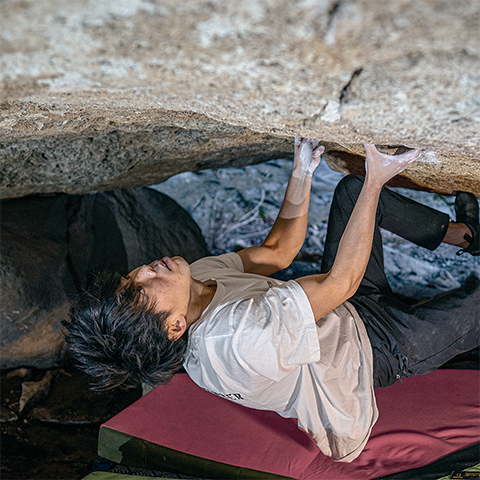
The pinch hold has a rounded, slopy part and randomly directed dents. Holding drastically changes by the dent you choose, the pressure and the direction you put on your thumb. An important factor for outdoor climbing, which is “focusing on the hold one by one, and investigating holding from many aspects” is the theme of this series of holds.
This hold is named “Akkaku”, since the pressure which is input from fingers changes along with moves.
(Akkaku is made up word by Ryuichi Murai, combining Atsu +Sakkaku. Atsu means pressure, and Sakkaku means illusion in Japanese respectively.)
Main accomplishments
Floating V16
United V16
Nexus V16
Sleepwalker V16
Livin’ Large V16
The smooth curve is the feature of this crimp hold.
This series of holds is shaped imagining moving dynamically in steep walls due to its incut and good-holding.
shper Naoki Shimatani
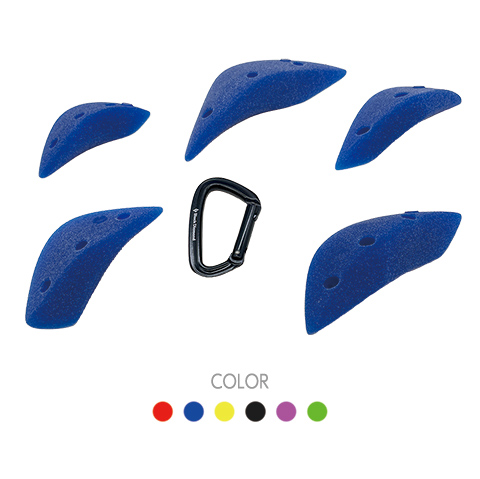
After consideration of realizing three-dimensional holding, the shape of the hold was naturally decided.
Routes which require profound positioning can be uniquely set with this series of positive holds.
Adaptive angle: up to 180 degrees.
shper Shinichiro Nomura
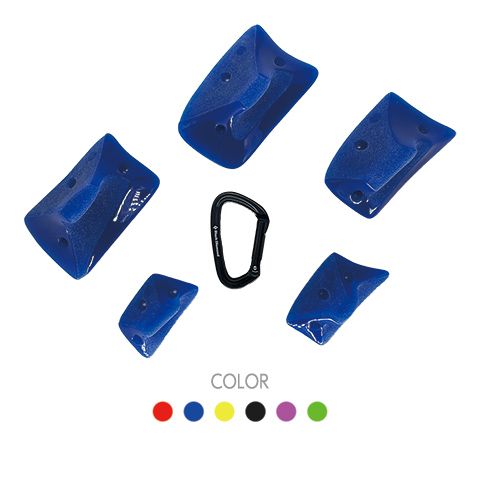
The pinch hold has a rounded, slopy part and randomly directed dents. Holding drastically changes by the dent you choose, the pressure and the direction you put on your thumb. An important factor for outdoor climbing, which is “focusing on the hold one by one, and investigating holding from many aspects” is the theme of this series of holds.
This hold is named “Akkaku”, since the pressure which is input from fingers changes along with moves.
(Akkaku is made up word by Ryuichi Murai, combining Atsu +Sakkaku. Atsu means pressure, and Sakkaku means illusion in Japanese respectively.)
shper Ryuichi Murai
